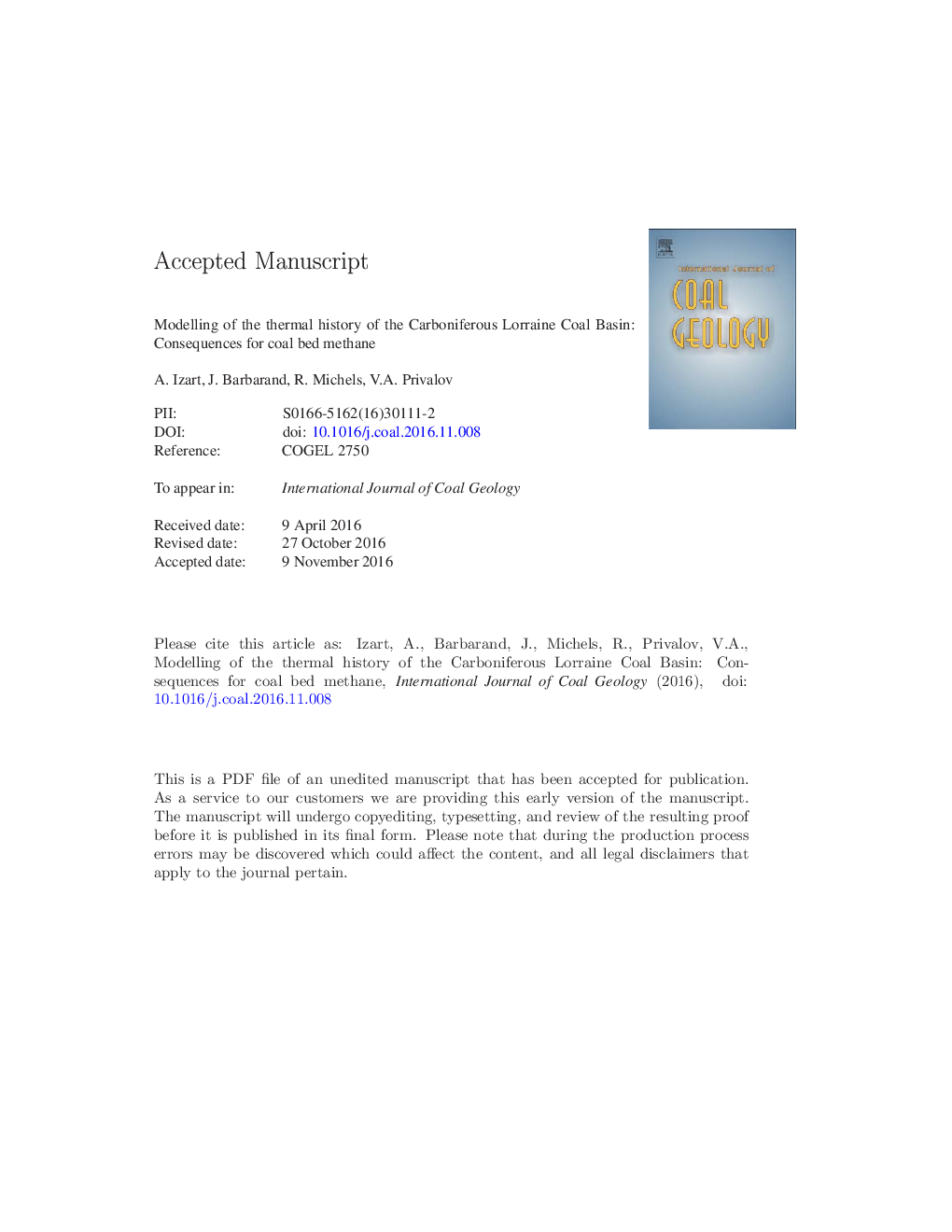| Article ID | Journal | Published Year | Pages | File Type |
|---|---|---|---|---|
| 5483811 | International Journal of Coal Geology | 2016 | 47 Pages |
Abstract
This paper proposes a new scenario for the thermal history of the Carboniferous Lorraine Coal Basin following the tectonic model developed by Averbuch et al. (2012) and establishes some consequences for the coal bed methane (CBM) exploitation. Organic matter maturation data (Vitrinite Reflectance) determined on eleven boreholes in the eastern Lorraine have been used to characterize the Lorraine Coal Basin evolution. Paleozoic and Mesozoic overburials have been calculated using a thermal modelling software (Petromod). Results show that (1) Paleozoic erosion may be estimated at a maximum of 1200 m which represents a low amplitude event, (2) a little erosion occurred between Upper Paleozoic and Lower Mesozoic: paleotemperature offset is about 20 °C and VR data range from 0.7 (Westphalian D) to 0.5 (Lower Triassic), (3) Cretaceous cover overburial reaches a maximum of 300 m and decreases eastwards and (4) the variation of heat flows is in agreement with the compressive and extensive phases of Paleozoic and the extensive phase of Mesozoic. Consequences on the petroleum system are the following: organic matter is immature in the Jurassic and Triassic sedimentary rocks, mature (oil window) in the Permian, Stephanian and Westphalian C-D, highly mature (gas window) in Westphalian A-B-C and overmature in Namurian-Westphalian A. The high methane adsorption capacity of coal and the presence of natural fractures inside coal seams demonstrated by coal tomography allow a high CBM potential in this basin. The Lorraine Coal Basin is therefore a target for coal gas.
Related Topics
Physical Sciences and Engineering
Earth and Planetary Sciences
Economic Geology
Authors
A. Izart, J. Barbarand, R. Michels, V.A. Privalov,
